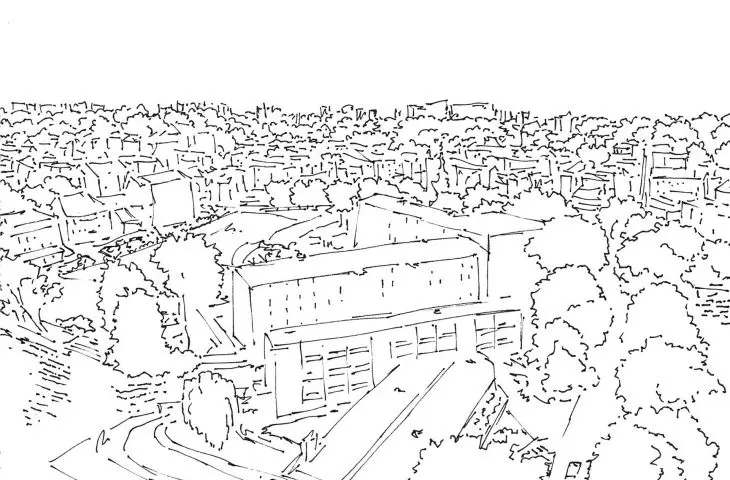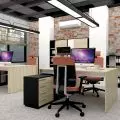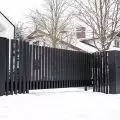Karolina Sommerfeld of Bydgoszcz University of Technology has proposed revitalizing part of the Rothera Mills in Bydgoszcz. The complex is located on the Mill Island, situated between the mainstream of the Brda River and its branch Młynówka. The structure consists of a main four-story square building - the Rother Mill - and two adjacent five-story wings in the form of an elongated rectangle - the Flour Granary and the Grain Granary.
sketch
© Karolina Sommefeld
Rothera Mills
The Rothera Mills complex served an economic and industrial function, but the dynamically developing economy led to its gradual extinction and then complete closure. For many years, forgotten and deteriorating, it tarnished the image of the already revitalized Mill Island. After several unsuccessful attempts to renovate the space by private owners, the complex was taken over by the City Council. The City entrusted the revitalization of the Mills to Budimex. The revitalized monument won the title of Masterpiece of Building Art 2021, and Mill Island with the Rothera Mills was among the winners of the National Geographic Traveler "Wonders of Poland 2023" plebiscite in the Kujawsko-Pomorskie Province.
cross section
© Karolina Sommefeld
modern spaces for creative work
Karolina Sommerfeld focused on renovating the interiors of the second and third floors of the Grain Granary. The second floor was designed by the author with those working in the creative industry in mind - there are places to work, relax, as well as space to create a small temporary exhibition and workshops.
Second floor, workshop room
© Karolina Sommefeld
In the middle section, she separated three rooms corresponding successively to work related to textile, painting and drawing, and for those working in the drawing profession. To preserve the main feature of the hard loft style, which is the openness of the space, a system of sliding panels was used to separate the rooms. The panels have the ability to rotate around their own axis to adjust the transparency, as well as slide to the edge to maximize the openness of the space.
Second floor, rest area in the creative area
© Karolina Sommefeld
The second solution for dividing the space is fluted glass. It allows separating the relaxation zone from the work zone without restricting the flow of natural sunlight. Existing wooden structural beams were used to install the frame on which both the panels and the glass partition are set. The zone located around the central part of the separated rooms houses the kitchen area, tables, seating in the form of sofas and poufs, as well as suspended seating.
Second floor, rest zone
© Karolina Sommefeld
Here there is also communication leading to the various floors of the Grain Granary, as well as women's and men's toilets adapted for use by people with disabilities. The rest of the space is used for small workshops and temporary exhibitions. The space has been divided into three rooms, which, as in the creative zone, are separated by sliding panels. This treatment is intended to allow the creation of three separate rooms, but also to leave the space completely open. Blinds were used in this section to accommodate the needs of emerging exhibitions.
Second floor, temporary exhibition
© Karolina Sommefeld
coworking space
The prepared proposal for the development of the space of the third floor consists of a space for coworking , relaxation and conference rooms. In the central part, the author separates double and single workstations regulating the height of the tabletop, and having a partition between the workstations in the form of pots with plants.
Third floor, workspace
© Karolina Sommefeld
Corrugated glass partitions also appeared in order to separate the work and relaxation areas and leave as much natural light flowing in as possible. Truss pots and glass partitions are also mounted to existing structural beams. Desk workstations are located adjacent to relaxation seating in the form of sofas, as well as armchairs with raised, soundproofing headrests, ideal for making a phone call without having to leave the room.
3rd floor, workstation
© Karolina Sommefeld
The first floor also houses a kitchen area and many tables, as well as meeting rooms. The space is divided into three sections, which can accommodate meetings of up to 12 people. The partitions between the rooms are fixed, made of plasterboard. Each of the three rooms is equipped with a TV for presentations, as well as desks that have built-in electrical outlets. The rooms have blinds that can be lowered during a presentation to improve visibility.
Third floor, conference rooms
© Karolina Sommefeld
































































